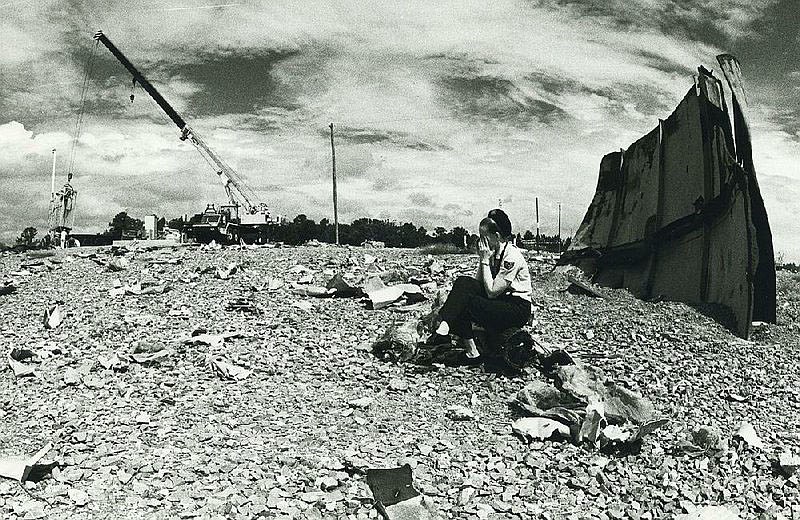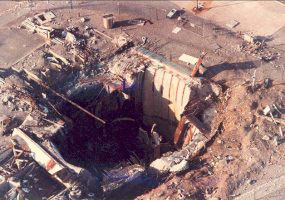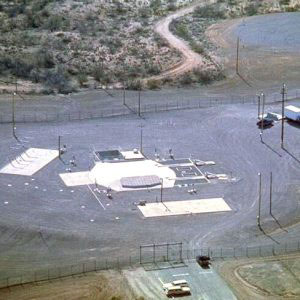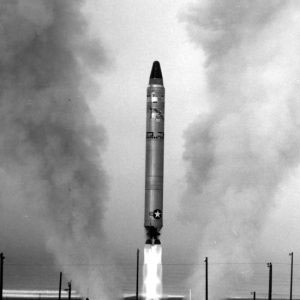My friend Lee Roy McConnell was on a weekend family excursion. He and his family thought they were in the middle of nowhere, just driving and exploring some of the rural areas north of Conway when they encountered a barricaded roadblock.
Manned by serious looking military police that demanded his I.D. and his reason for being there, Mr. McConnell quickly realized he was located in a place he wasn't wanted and where he didn't want to be. America was in the middle of the Cold War with Russia and everyone knew that Arkansas had several hidden missile silos containing nuclear weapons.
A 1965 missile accident near Searcy had resulted in the death of 53 workers, the largest number killed in any U.S. nuclear weapons facility. The accident occurred during a maintenance period when a welder accidentally cut through a hydraulic line touching off an oxidizer explosion and fire. The accident would have been more serious had the nuclear warhead not been removed prior to the accident.
Mr. McConnell knew there were many more such sites and, given the rural area and the military presence, he realized he had stumbled upon one.
The U.S. Air Force Strategic Missile Wing, working out of the Little Rock Air Force Base in Jacksonville, maintained 18 silos in the region. Each silo was equipped with the newest Titan II missile, an ICBM with capability of delivering a nuclear warhead 6,000 miles and landing on site with 90% accuracy. Each warhead carried more explosive than had been dropped by mankind throughout history, even counting the two nuclear devices dropped on Japan. A year or so later, his deductions proved correct.
On September 18, 1980, two workers entered the huge silo at (missile) Complex 374-7, located on a rural farm just outside of Damascus. As they descended into the eight story deep silo, one of the workers dropped an eight-pound socket off of his huge wrench. The huge socket tumbled downward, eventually striking and piercing the outside layer of the fuel tank. The silo was evacuated and a crew sent in to prevent disaster. This time, the missile silo wasn't empty, the nine-megaton Titan II nuclear warhead was attached with enough explosive power to destroy half the state.
In spite of the efforts of the crew, at around 3 a.m. the next morning, the hypergolic fuel in the tank exploded. The 740-ton silo door was blown away, the second stage of the rocket exploded, and the W53 thermonuclear warhead was launched out of the silo, landing about 100 ft. from the complex entry gate.
Several personal stories of the event can be found online and in the Arkansas Encyclopedia of History and Culture. One survivor describes being blown 50 to 60 feet away and remembers being surrounded by huge chunks of falling concrete and streams of fire. Others described the jet of fire, shooting high into the air and lighting the countryside and the panic as people left the site.
Steve Taylor, who was the Arkansas Democrat writer on site when the explosion occurred, remembered asking one of the airman where he should go. The airman pulled off his mask, "As far as you can, as fast as you can." Sounds like great advice!
The Titan II missile safety code prevented it from exploding and, according to government sources, no nuclear materials were exposed. A total of 21 people were injured and one, Airman David Livingston, was killed.
Clean-up operations gathered debris from 400 acres surrounding the site and the total cost was nearly $250 million, roughly one-quarter of a billion dollars. The resulting congressional inquiry into the incident required "modification" of the Air Force's ability to deny the existence of nuclear weapons at an accident site.
The Titan II program was deactivated by President Reagan and the last site in Arkansas was closed in 1987. As far as is known, Arkansas has no known silos for nuclear weapons in the state but if you're out wandering around the state in the middle-of-nowhere and run across an official yellow and black radiation sign stating "stay out," it might be wise to heed the warning.




